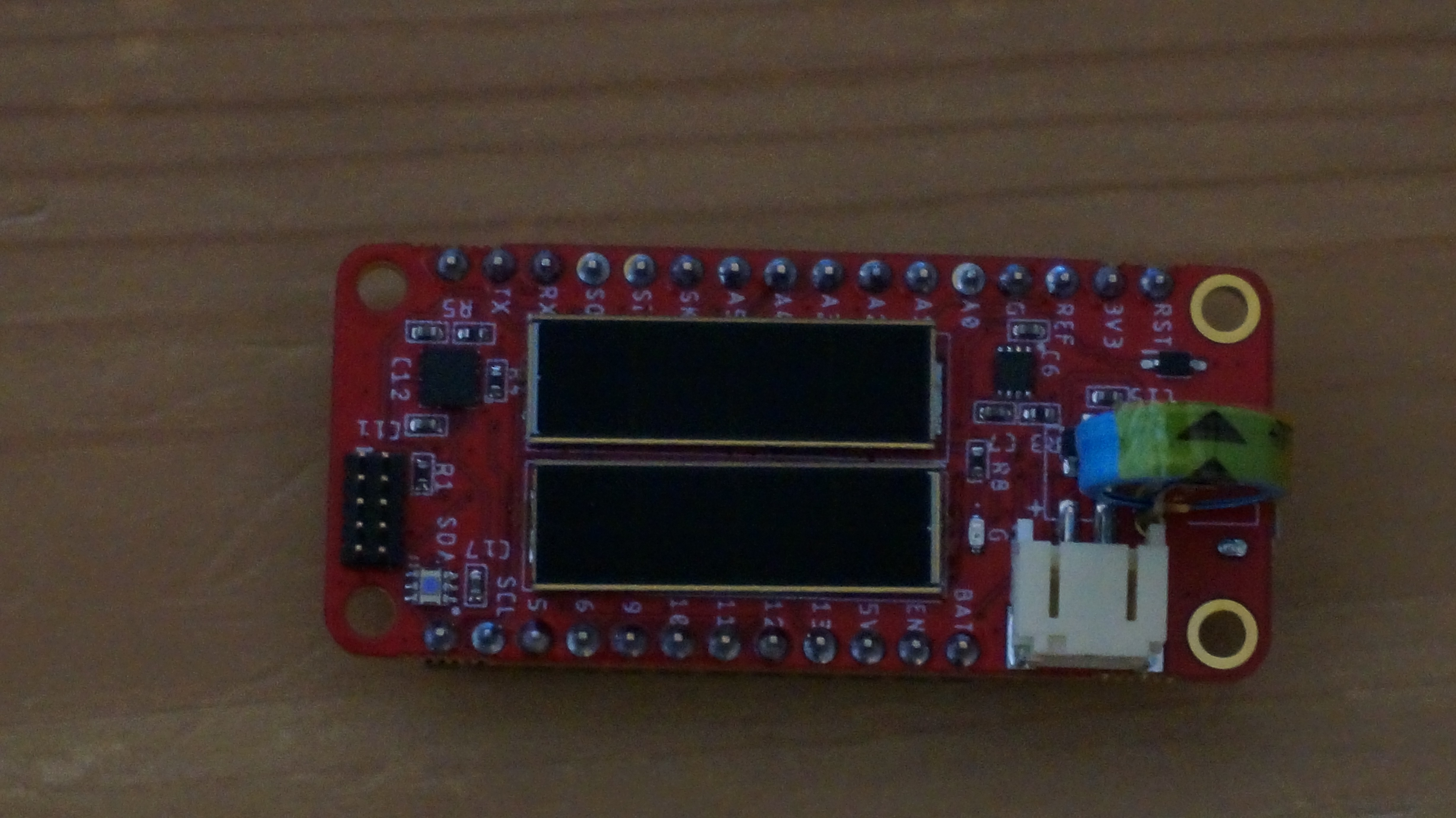Version 2 hardware arrived and I've been testing it. The main improvements from version 1 are:
- Fixed schematic error on 3.3V regulator
- Added low power LED
- Even low power LED uses many times the power of the rest of the HW, so this should not be used if the goal is to minimize power. It is really useful for detecting if the HW is operating though.
- Added OPT3004 ultra-low power ambient light sensor
- This could be used to determine when the system should sleep and when the light is powerful enough for it to operate continuously.
- It is also useful for determining the amount of light available, for testing in what conditions this design can in fact run in active mode continuously.
- Added mounting spot for 0.33F supercapacitor for operation without a battery
- At typical full active power of ~318uA at 3.3V, and allowing the supercapacitor to discharge from 4V to 3.3V, this should allow about 12 minutes of operation in no light. Of course if low power modes are used, this can extend to much, much longer.
All of these updates thankfully worked right away, and the board was ready to test. The pictures below show the board fully assembled, except the supercapacitor is taped in so I can easily remove it.



SO...DOES IT WORK?
Now for the question underlying this entire project: can this system operate in active mode in ambient indoor light? Yes...and no. There are many challenges to indoor ambient light power harvesting. First, there simply isn't much light available. Human eyes are incredibly sensitive and can operate well across a huge range of lighting conditions, so indoor light is typically 3-4 orders of magnitude less powerful than direct sunlight. Although illuminance cannot be directly related to irradiance, it is a related. The OPT3004 measures about 70 lux in my apartment, while wikipedia claims typical illuminance in direct sunlight is 32,000-100,000, which indicates about 3 orders of magnitude difference. Second, the light that is available from synthetic sources do not have the same spectrum as sunlight, and solar cells are typically less efficient in these artificial spectra.
This hardware easily operates under indirect outdoor lighting, even through a window where the sunlight can never be direct. It also can operate underneath a bright desk lamp, and even underneath a 120 lumen LED flashlight, with no battery installed. Will it operate under brighter office lighting? With COVID-19 restrictions, this is difficult to test for now, but I expect it will not. But it may be close. Certainly if low power modes were used, it could. While that still implies my original goal was not met, this is still a very interesting development board for anyone working on ultra low power devices. With a typical ultra-low power electronics use case in which it periodically wakes up, senses something, and sleeps again, it should be able to operate indefinitely indoors while harvesting ambient light.
Discussions
Become a Hackaday.io Member
Create an account to leave a comment. Already have an account? Log In.